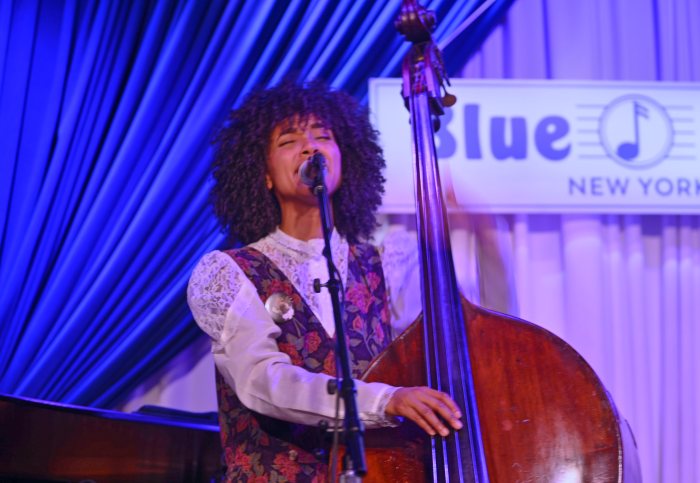If Paul Simon sticks to the set list he’s followed throughout Homeward Bound: The Farewell Tour, the 76-year-old musician will open his New York shows Thursday, Friday and Saturday night — the last shows he swears he’ll ever play — with “America,” a yearning song he recorded in 1968 about a young man and his lover Cathy on a journey from Michigan eastward to “look for America.”
Like many Simon songs, “America” is melodically perfect, lyrically evocative and infused with imagery of New York. (Near the tune’s end, the narrator is “counting the cars on the New Jersey Turnpike.”) Also, like many Simon masterworks, it has been absorbed by the culture, chronicling a specific moment, but elastic enough to transcend its era. The track’s power is such that it could speak just as profoundly to the Counterculture as it did to David Bowie a few decades later when he chose it as his moving opener at the Concert for New York City after the 9/11 attacks.
In a sense, Simon’s final concerts are a return home — the final performance is in Queens, where he grew up — but New York has rarely been far from his mind, seeping into his artistry and shaping his worldview.
“When he started out in the ’50s with songs like ‘Hey Schoolgirl,’ it was a very outer-borough world that he came from,” says Rolling Stone senior writer Andy Greene. “But he’s been Mr. Manhattan for a very long time, even though he doesn’t live here full time. Since the ’70s, he’s been a quintessential New Yorker in so many ways. He’s just been part of the scene for so long.”
That scene wasn’t just musical. Sure, his songs are full of NYC references — and two of his most memorable shows were played in Central Park (one of them alongside his occasional musical partner Art Garfunkel) — but in the 1970s he also tapped into the town’s edgy, smartass insurgence, becoming close friends with Lorne Michaels, who chose him as host of the second-ever episode of “Saturday Night Live.” So enmeshed in the fabric of New York is Simon that, after 9/11, Michaels turned to the musician for the show’s first post-attacks episode, requesting that he play “The Boxer.”
“The story of the kid who comes here and has nothing and makes something of himself — it’s a story of so many New Yorkers,” Greene says of “The Boxer.” “You can feel the energy of the city in a song like that.”
But beyond conveying New York’s electric rhythms, Simon captured the heartbeat of his generation, candidly articulating the Baby Boomers’ maturation and mortality. “In the ’60s, he was talking to an audience of idealistic undergrads,” says Variety senior features writer Andrew Barker “And in the ’70s he was talking to a newly sophisticated urbanite audience that had therapist appointments but still considered themselves young and hip. Then in the ’80s, he was talking to a newly financially stable audience with children who were starting to get curious about the rest of the world. You can really identify important developments in the national mood over the decades by following Simon and his evolving interests.”
Those interests included a creative restlessness, abandoning one sound (or dropping a musical partner) in pursuit of fresh terrain. The most epochal of these adventures will always be 1986’s “Graceland,” his immersion into South African music, but he’s also dexterously investigated everything from Brazilian grooves to Dixieland to zydeco to doo-wop to sampling.
James Bennighof, the vice provost for academic affairs and policy professor of music theory at Baylor University (and the author of “The Words and Music of Paul Simon”), sees Simon’s roving creativity echoed across the arts.
“He goes browsing for different kind of styles: ‘What can I make with that?,’” says Bennighof. “[It’s just] as an artist might say, ‘I’ve never messed around with clay — let me do that. Oh, watercolors — I wonder how that could fit into the kind of thing that I do.’ All artists do this, but the way that he would absorb these things into his own style has always seemed striking to me.”
If Simon sticks to the set list, the final song of his final show of his final tour will be “The Sound of Silence,” which is even older than “America.” A chilling song about ambiguous social ills, “Silence” was released first in 1964 but then redone a year later to add a more muscular musical backing, becoming Simon & Garfunkel’s first hit, going all the way to No. 1.
“That was the breakthrough song that changed his whole life, his whole career,” Greene says. “To bring it full-circle back to that — and the feeling that [song] gives about the world right now — I think it’s a perfect way to bookend the show.”
These final concerts will touch on different periods of Simon’s greatness, stretching back to the Garfunkel years but also including superb work from recent albums like “So Beautiful or So What.” But he’ll end where he began.
“For him to go back to Queens — go back to where it all started for him, go back to where him and Art were singing on the playground together — I think it will be very emotional for him and for the audience,” says Greene. “It’s a sad thing just to think it will really be it. I’ve seen him so many times — the thought of the last concert is very intense and very sad.”
Paul Simon has always been there for New Yorkers, expressing their feelings through words and music more beautiful than they could have ever imagined. We’ll get through this together, too.
If you go: Paul Simon is performing at Madison Square Garden on Thursday and Friday and Flushing Meadows-Corona Park on Saturday. All shows sold out, but resale tickets are available.




































